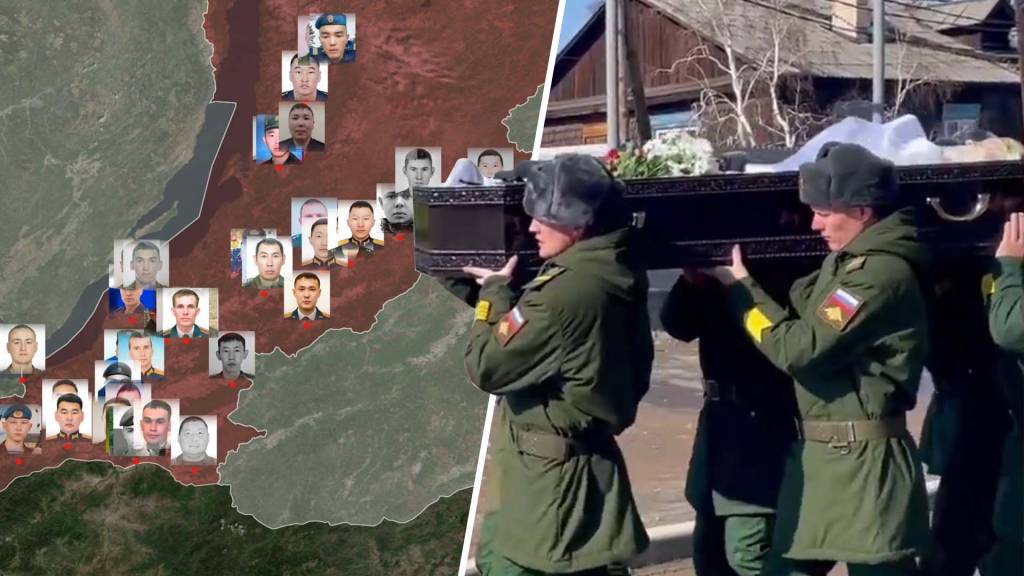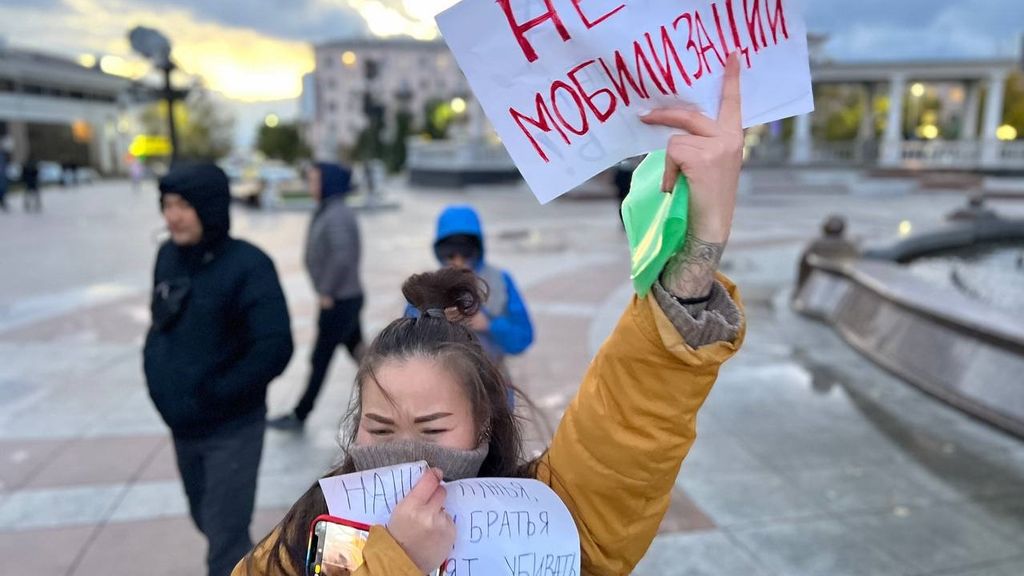avtozak (Telegram)
NOS . News•
-
Paul Alexander
Overseas Editor
-
Paul Alexander
Overseas Editor
A young woman in light-colored jeans and platform shoes walks with a banner under her arm to the central square in Ulan-Ude, the capital of the Siberian Republic of Buryatia. She is on her way to take part in a protest announced on Instagram against the war in Ukraine and mobilization. But as soon as she arrives, instead of protesters, she sees only police officers.
Human rights activist Nadezhda Nizhovkina also arrived on the field. She writes live all the appearances of her city on her YouTube channel. And when it comes to arrests, give protesters legal help – recording everything on camera.
According to Nizovkina, this is exactly what the resistance currently looks like in Buryatia, she said by phone from Ulan-Ude: “Someone went out to the street with a sign, and a little later another joined. The police immediately intervened, arresting protesters and unsuspecting passers-by at the same time. It’s more difficult in villages. If someone there talks about mobilization on social media, someone will be at the door right away to pick them up.”
A protest stand against the movement in the center of Ulan-Ude:
Elsewhere in Russia too, there is hardly any visible resistance, while as soon as the “partial” mobilization was announced – now over a month ago – countless protesters took to the streets in Russia.
The protests were especially strong in Dagestan, Yakutia and Tuva – “national republics” with a large ethnic minority. It is precisely those impoverished regions on Russia’s fringes that have been disproportionately affected by war and mobilization. They also count by far the largest number of casualties on the battlefield. Dagestan tops the list with 310 recorded deaths. This is followed by Buryatia with 288 deaths (reference date 7 October).
In remote Buryatia – on the border with Mongolia – buses loaded with men were also taken to mobilization centers immediately after the announcement. He has already called it “the worst night in the life of Buryats”.
Buryat women demand the authorities to bring their children home from the front
The protest the first night was smaller. Pictures spread on social media of a woman holding a sign that read, “Our men, our sons, our fathers do not kill men, fathers and sons.” Mobile units arrested at least four protesters, including Nizovkina who broadcast the event live on her YouTube channel. She was held for two nights.
But after the outbreak of popular anger in the early days of the mobilization, everything in the country remained strictly calm. However, according to Nizovkina, the mobilization radically changed the attitude of the population. Nezovkina: “A fast-growing group of newcomers who have never been involved in politics are turning against the war. Before mobilization I saw the letters Z and V everywhere on cars and buildings, on T-shirts, on balconies. With these citizens symbols their support for Putin and his war. Now they are gone. Suddenly, and with it, the rumors of wars.
For now, says Nezovkina, the resistance consists of a series of individual actions. For example, the retired woman who recently took to the streets in Ulan-Ude with a sign that reads “Stand up for freedom.” Or the anonymous activists who earlier this month set fire to the Russian flag with a V-shaped statue of Lenin in the center and put pictures of their activism on a telegram.
Support from abroad
At the same time, the resistance in Buryatia receives support from a completely different quarter: from Buryat emigration, especially in the United States, Kazakhstan and South Korea. They have united into the Free Buryatia Foundation. Immediately after the mobilization was announced, the organization arranged dozens of buses with donations from its members to transport the men from Buryatia across the border into Mongolia. It is estimated that between 3,000 and 4,000 Buryats have fled the country since September 21.
Earlier in the war, a team of lawyers from the Free Buryatia Foundation was able to bring home a group of Buryat soldiers, says Director Aleksandra Garmazjapova by phone from Astana, the capital of Kazakhstan. “They were imprisoned because they refused to fight. And because we already had legal experience inside, we were also able to respond adequately to the new reality of mobilization.” For example, the foundation provided legal support to people who were called in error.
Buryats Abroad also spoke out against the war in a hack video on YouTube. “Russian state media repeatedly talk about Buryat warriors under Putin.” Garmazjapova says. It has also happened repeatedly that war crimes have been wrongly attributed to Buryat soldiers, including in Botja.”
Buryats are speaking all over the world against war:
This gives the impression that not of Russian origin guilty of atrocities, but barbarians of Asia. Garmazjapova wants to fight that image.
Following the example of the Free Buryatia Foundation, other ethnic populations in exile are closely following events in their homeland and united in the Free Buryatia tradition, such as Free Yakutia, New Tuva and Free Kalmykia.
NOS made a video in April about the many ethnic minorities who fell on the battlefield

Many ethnic minorities were killed in Putin’s war. why?







